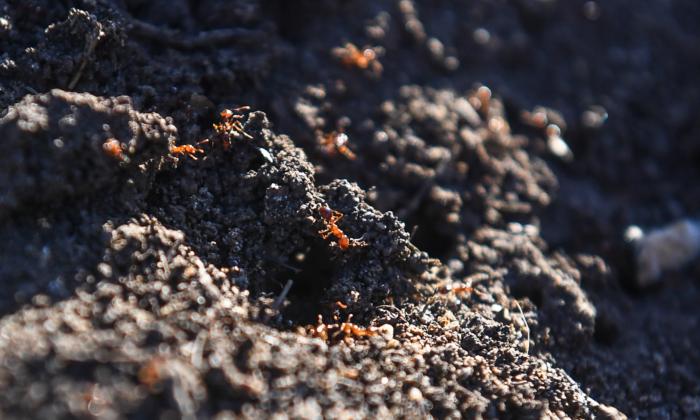The insidious fire ants sweeping the nation and power poles towering above farming land have dominated a meeting of agriculture ministers.
Carp herpes was also on the agenda at a meeting of state and federal ministers on Oct. 6.
With bushfires and floods ravaging regional towns and fears of an impending drought, the ministers discussed the hit to winter crops and livestock prices, and the subsequent blow to farm incomes.
The expansion of poles and wires across prime agricultural land proved a hot topic.
In the march towards clean energy and achieving net zero emissions, ministers stressed the need to properly consult stakeholders and share information with the people affected to ensure their concerns were addressed.
After a briefing on fire ants, an invasive species that can kill native species and livestock, there was agreement on the need to eradicate the dangerous pest.
Federal Agriculture Minister Murray Watt welcomed fast-tracked funding to quash the ant in south-east Queensland and others committed to scrutinising their own biosecurity budgets to ensure the war was won.
Federal Agriculture Minister Murray Watt has welcomed moves to eradicate fire ants.
Uncertainty remains over whether to release carp herpes into Australian waterways, with ministers wanting more information about whether the virus was a safe and effective way to kill and control populations of the pesky fish.
Ahead of the meeting, farming groups ramped up calls to rethink a ban on live sheep exports.
Labor pledged at the 2019 and 2022 federal elections to end the trade, but the Albanese government has consistently said it would not happen this term, allowing the industry a smooth transition.
West Australian Agriculture Minister Jackie Jarvis is opposed to the ban and has described the dramatic drop in sheep prices and upcoming policy change as a “perfect storm.”
Sheep prices have dropped by about 40 percent since the beginning of the year and producers have linked the falls to the policy change.
Ms. Jarvis met this week with Western Australia (WA) Farmers including live sheep exporters for a roundtable discussion on the ban.
Farmers said the talks focused on the drought and oversupply of sheep as well as their calls for an export phase-out to be delayed.
WA Farmers Trevor Whittington said the federal government’s commitment to ending live sheep exports was already having an impact with some boats no longer coming to Australia.
“They’ve left the industry in the lurch as we go into a drought because we don’t have a domestic market,” Mr. Whittington told AAP.
Mr. Whittington said there had been a rush to offload sheep at low prices.
“Farmers are taking as low as a dollar a head in the sale yards rather than pay a dollar a day to feedlot sheep in the hope that the traders can find boats to live export them out,” Mr. Whittington said.
Farmers are taking lower prices for sheep amid uncertainty over the future of the live export trade.
NSW Farmers wanted state Agriculture Minister Tara Moriarty to raise the issue of live exports at the meeting.
“We would hope to see the agriculture minister consider opportunities to use live exports by sea to support farmers and to uphold animal welfare with the current market and drying conditions,” a group spokesperson said.
The federal government is expecting a report at the end of October from an independent panel set up to deliver the phase-out of live sheep exports by sea.
Animal welfare was discussed at the meeting but an official statement released afterwards made no mention of live exports.
The ministers will meet again in 2024.






